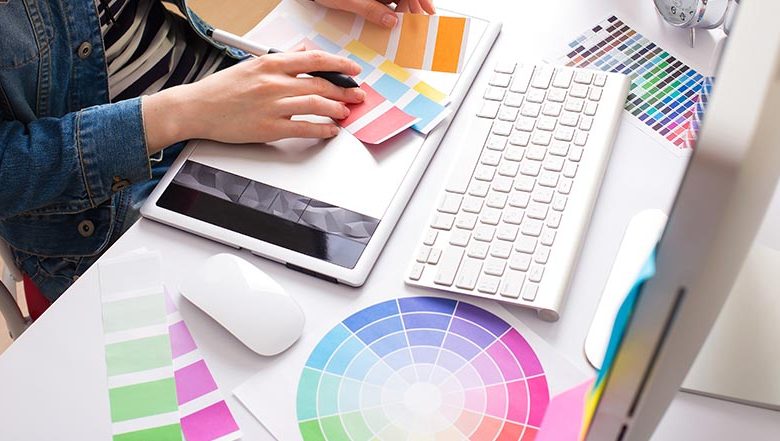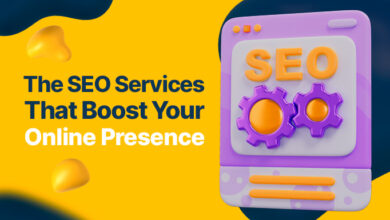
A logo symbolizes your brand or business. It is a visual representation of a brand that is often used to create recognition and identity among customers and the general public. It is typically seen by designers as the first opportunity for the first impression and should convey the business or brand in its entirety.
A logo can take various forms, such as a graphic or an emblem, and it may incorporate the company name or slogan. Logos are typically used on websites, business cards, advertising materials, and product packaging, among other things. A well-designed logo can help a brand stand out in a competitive marketplace and convey its values and identity to potential customers.
Here, we talk about logos and their types and how they can be great for your business!
How Many Types of Logos Are There?
There are several types of logos, including:
-
Wordmark logos
These logos consist of the company name or initials written in a unique font style. Google is an example of a wordmark logo, though most professional and business-facing companies do this.
-
Lettermark logos
Similar to wordmark logos, a letter mark logo uses only the initials of the company name, usually in a stylized font. The ‘f’ letter in Facebook, when used on its own, can be considered a letter mark logo.
-
Pictorial logos
These logos use an image or icon that represents the company or product, such as the Apple logo or the Twitter logo.
-
Abstract logos
These logos use abstract shapes and forms to represent the company or product, such as the Nike swoosh or the Airbnb logo. The latter example shows the letter ‘A’ through its abstract logo, representing the company name.
-
Emblem logos
These logos use a symbol or icon enclosed within a shape or badge, often with the company name included. BMW and Starbucks are popular examples of this.
-
Mascot logos
These logos use a character or mascot to represent the company or product, often seen in sports teams. Mickey Mouse is one of the most famous examples of a mascot, both as a logo and as a mascot logo design character.
-
Combination logos
These logos combine elements from two or more of the above types to create a unique brand identity. Burger King and Doritos serve as common examples of this.
-
3D Logos
3D logos are designed to appear as if they have three-dimensional depth, making them appear realistic. They are useful in conveying realistic images or characters. Your brand can have both 3D and 2D versions of its logo.
Each type of logo has its advantages and disadvantages, and the choice of which type to
use depends on the company’s branding strategy and the message it wants to convey to its audience. These are just a few examples of the types of logos that are used.
What are the 3D logo and 3D spinning logo?
As mentioned before, a 3D logo is a type of logo that is designed to appear as a three-dimensional object. It can be created using various 3D software tools, such as Blender, Maya, or 3DS Max. A 3D logo typically has depth and perspective, making it appear more realistic than a 2D logo. The added expertise and detail make 3D logos more expensive to make and show online on websites.
A 3D spinning logo is a type of 3D logo that is animated to rotate or spin on its axis. This type of logo can be used for branding, advertising, or promotional purposes. A spinning logo can help to create a dynamic and eye-catching visual effect, drawing attention to the logo and the brand it represents.
Both the 3D logo and the spinning logo can add depth and dimension to a brand’s visual identity, making it more engaging and memorable to audiences.
Spinning 3D logos are usually put high up, similar to a billboard, meant to show to a large audience.
Why should you pick a 3D logo over a 2D one?
Choosing between a 3D logo and a 2D logo depends on a company’s branding strategy, target audience, and overall design goals. No type of logo is better than another, as it is very dependent on the brand, the company, and the goals. However, here are some potential advantages of a 3D logo over a 2D logo:
-
A 3D logo has an Increased visual impact on audiences. Especially if that 3D logo is spinning, it can have a greater visual impact than a 2D logo because it creates depth and dimension, making it more interesting and engaging to look at while also drawing attention to itself if the logos around it are static.
-
It can help with enhanced brand recognition. A 3D logo can make a brand more memorable and recognizable than a 2D logo because it is unique and stands out from other logos, as mentioned above.
-
3D and spinning logos are also seen as more modern and innovative.
-
A 3D logo can give a brand a much sleeker look and feel, which can be beneficial for companies looking to appeal to a younger, tech-savvy audience or to grab more attention from general audiences.
-
A 3D logo is also much more versatile, as it can be used in a variety of contexts, including websites, social media, print materials, and even 3D animation, which can make it a versatile and adaptable design choice.
However, it’s important to note that 3D logos can also be more complex and
time-consuming to create than 2D logos and may require specialized software and skills.
Additionally, the added depth and detail of a 3D logo may not be
necessary or appropriate for all brands or design contexts.
Conclusion
Logos on their own have to be visually striking and unique enough to stand out from the crowd,
but 3D and spinning 3D logos are even more so.
While they are not inherently better than their 2D counterparts, spinning 3D logos have
their own advantages, and designers and marketing brands often prefer a spinning logo for
a recognizable brand to display at a height.




